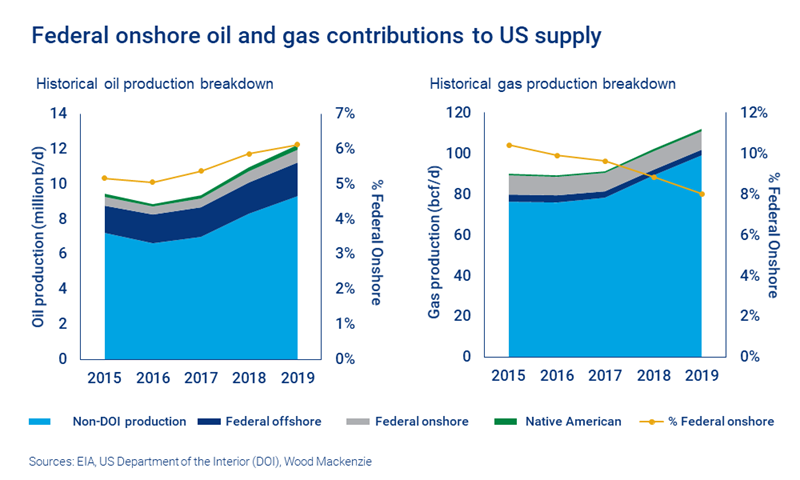Federal leases and permits: how much could US tight oil shrink?
The Biden administration recently signed executive orders impacting the oil and gas sector – and tighter rules may be ahead
1 minute read
The Biden administration has moved swiftly to impose temporary restrictions on new federal lease sales and drilling permits ahead of a potential overhaul of regulations for oil and gas producers on federal lands.
To what extent could the new administration’s energy and environmental goals curb future US oil supply? Would a permanent ban on new federal lease sales and/or drilling permits on existing leases inflict much pain? Where would it hurt the most?
As we wait for an official update, we've modelled a range of US onshore oil supply outcomes based on possible changes to federal rules. Fill in the form for a complimentary extract, or read on for an overview of some of the key themes.
President Biden takes swift executive action
Acting on his campaign promises to tackle the climate crisis, US President Joe Biden recently signed a number of executive orders temporarily restricting new drilling permits and lease sales on public lands while a comprehensive review takes place. Tribal, state and private lands are exempt.
The temporary orders will have little impact on federal production. The review process, however, could result in more far-reaching measures, such as heftier royalties or environmental obligations on new leases, a ban on new lease sales and/or the prohibition of new permits on existing leases. It could also result in something close to business as usual.
Any significant changes to long-standing processes are likely to face stiff opposition and challenges from both the industry and oil-producing states. Indeed, some industry groups, members of Congress and others have already taken action to fight the administration’s actions to date.
Impact of a permanent ban on new federal onshore lease sales
About 6% of US oil production and 8% of gas production is sourced from onshore federal lands and minerals. So, only a fraction of the Lower 48 supply would be directly impacted by changes to federal oil and gas leasing or permitting rules. Most key plays and production hubs are located on private or state land, though there are some notable exceptions.
A permanent ban on new federal onshore lease sales, by itself, would have minimal impact on tight oil supply by 2030. In such a situation we would expect future supply to remain close to our base case scenario.
Visit our store to buy the full report, which includes both a regional and full scenario analysis through 2030, or fill in the form for an extract.
Impact of the more extreme scenario
Banning new federal drilling permits on existing leases is a more extreme scenario, which would put future supply volumes at risk and dent future drilling inventories in some regions.
Oil-producing states rely heavily on revenues from royalties and lease sales and state leaders would feel pressure from constituent groups to protect those income streams. Operators, meanwhile, would argue that new drilling permits were needed to realise the full value of the federal leases they have acquired over the years.
We quantify the risk to US onshore oil supply in our comprehensive report, alongside a regional analysis of the most vulnerable regions.
Fill in the form for a complimentary extract, which includes more on:
- Biden administration executive orders
- How did we get here and where are we headed?
- Operators’ federal exposure
- Federal oil and gas contributions to US supply
- Two different stories: federal permits and leasing in 2020
- Maps: key supply regions.






